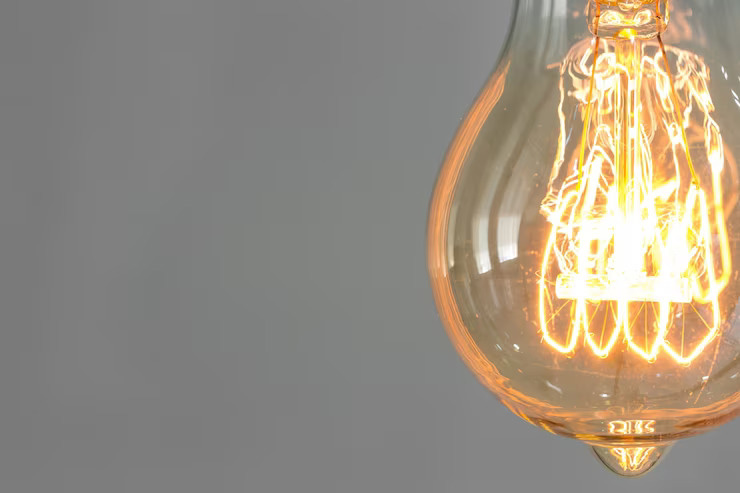In today’s world, where environmental concerns and rising energy costs are at the forefront, finding ways to reduce electricity consumption has become crucial. By adopting energy-efficient practices, individuals can contribute to a more sustainable future while also benefiting from lower utility bills.

This article provides practical tips and strategies on how to reduce electricity use in our daily lives. From making simple behavioral changes to implementing energy-saving technologies, these tips will help you conserve energy and make a positive impact on the environment.
- One of the most effective ways to reduce electricity consumption is by upgrading to energy-efficient appliances. Look for appliances with the ENERGY STAR label, as they meet strict energy efficiency standards. Energy-efficient refrigerators, air conditioners, washing machines, and other appliances consume significantly less electricity while providing the same level of functionality. These appliances are designed to optimize energy usage, resulting in long-term savings on your electricity bill.
- Heating and cooling consume a significant portion of household energy. Adjusting your thermostat can help reduce electricity usage. In colder months, lower the thermostat by a few degrees and wear warmer clothing or use blankets to stay comfortable. In warmer months, set the thermostat a few degrees higher and use fans to circulate air and create a cooling effect. Consider investing in a programmable thermostat that allows you to set temperature schedules based on your daily routine, ensuring energy is not wasted when you are away from home.
- Make the most of natural light to reduce reliance on artificial lighting. During the day, open curtains or blinds to allow sunlight to illuminate your living spaces. Consider arranging furniture and workstations near windows to maximize natural lighting. This simple adjustment can significantly reduce the need for electric lights during daylight hours.
- Replace traditional incandescent bulbs with energy-efficient LED (Light Emitting Diode) bulbs. LED bulbs consume up to 80% less energy and have a significantly longer lifespan. Although LED bulbs may have a higher upfront cost, they pay for themselves through energy savings and reduced replacement frequency. Additionally, LEDs are available in various color temperatures, allowing you to choose the desired ambiance for different areas of your home.
- Many electronic devices continue to consume energy even when not in use. Unplug chargers, televisions, computers, and other electronics when they are not actively being used. Alternatively, connect these devices to power strips and switch them off when not in use. Power strips with integrated timers or smart features can further automate the process, ensuring devices are not left on standby indefinitely. Many people use computers 24/7 to make bets or play casino at https://vave.com/de/casino.
- The kitchen is a significant energy-consuming area. To reduce electricity usage, use energy-efficient cooking appliances such as induction cooktops and microwaves. Match the size of the cookware to the burner size, as using larger burners for smaller pots wastes energy. Keep oven use to a minimum and consider using smaller countertop appliances when suitable, as they consume less energy.
- Proper insulation and sealing of your home can significantly reduce the need for heating and cooling, resulting in lower electricity consumption. Insulate your attic, walls, and floors to prevent heat transfer. Seal gaps around windows, doors, and electrical outlets to minimize air leakage. Proper insulation and sealing maintain a more comfortable indoor temperature while reducing the load on heating and cooling systems.
- Install energy-efficient window treatments such as blinds, shades, or curtains that help regulate the amount of heat and light entering your home. During hot summers, close window coverings during the day to block out direct sunlight and keep your space cooler. In colder months, open them during the day to let sunlight in and close them at night to retain warmth. These window treatments act as an additional layer of insulation, reducing the need for excessive heating or cooling.
- When doing laundry, wash full loads instead of partial ones to maximize energy usage. Use cold water whenever possible, as heating water accounts for a significant portion of energy consumption. Opt for air-drying clothes instead of using the dryer, taking advantage of natural ventilation or a drying rack. Similarly, when using the dishwasher, run full loads and choose the energy-saving mode if available. Avoid pre-rinsing dishes under running water and let them air dry or use the dishwasher’s energy-efficient drying setting.
- Promote energy-saving habits among family members by educating them about the importance of conserving electricity. Encourage turning off lights when leaving a room, unplugging electronics, and practicing other energy-efficient behaviors. Involve everyone in setting energy-saving goals and tracking progress. This collective effort not only reduces electricity consumption but also fosters a sense of responsibility and mindfulness toward the environment.
- Consider conducting a home energy audit to identify areas where energy is being wasted. Professional energy audits or DIY assessments can pinpoint energy inefficiencies, such as air leaks, insulation gaps, or outdated appliances. By addressing these issues, you can make targeted improvements that result in substantial energy savings over time.
- Consider utilizing renewable energy sources to power your home, such as solar panels or wind turbines. Investing in renewable energy systems can significantly reduce or even eliminate your reliance on traditional electricity grids, making your home more sustainable and potentially saving money in the long run. Explore local incentives, grants, and financing options that may be available to support the transition to renewable energy.
Also Read: 5 Emerging Sustainable Energy Technologies
Reducing electricity consumption is not only beneficial for the environment but also helps lower utility bills. By implementing simple yet effective strategies such as upgrading to energy-efficient appliances, adjusting thermostat settings, utilizing natural lighting, and optimizing energy use in various areas of your home, you can make a significant impact on energy conservation.
Remember, small changes in behavior and habits can lead to substantial energy savings over time, contributing to a more sustainable future for generations to come.




